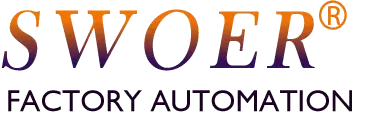I. Bucket Elevator Loading: Buckets at the bottom scoop or receive material from an inlet. Lifting: Buckets attached to a belt or chain are carried vertically upward. Discharging: At the top, buckets tip over, dumping material into the feeder hopper. Returning: Empty buckets return down to the bottom for the next cycle. Characteristics: High capacity, […]
Archivio Autore: 张
Functions of an Elevator/Lifter In vibratory feeding systems, an elevator typically refers to a vertical conveying feeder, and its core functions are: 1. Vertical Material Transportation Core Function: Moves materials from a lower level to a higher level. Role: Solves height differential challenges and optimizes floor space. 2. Automated Feeding Linkage Function: Acts as an automated bridge between a bulk […]
I. Power & Drive System Power Source: Provides energy for riveting. Pneumatic: Air compressor, tank. Hydraulic: Hydraulic power unit, oil tank. Electric: Servo or high-power motor. Drive Mechanism: Converts power into riveting action. Cylinder (Pneumatic/Hydraulic): Generates linear force. Crank/Linkage/Knuckle Joint: Converts rotation to linear force with amplification. Servo Electric Actuator: Provides precise force and displacement […]
I. Mechanical Structure Components Base Platform: The fixed, stationary mounting frame. Moving Platform (End-Effector Platform): The platform that moves in space and carries the tooling. Drive Arms (Active Arms): Typically 3 or 4 arms, each directly driven by a servo motor. Forearm Links (Passive Arms): Lightweight links (e.g., carbon fiber) connected by spherical joints to transmit motion […]
Superior Flexibility for Rapid Changeover Description: Its core advantage. Switching from Part A to Part B requires no mechanical retooling. Advantage: Simply load a new vision program. Changeover time is reduced from hours to minutes, ideal for high-mix, low-volume production. Extremely Gentle on Parts Description: Operates on a “scatter, identify, pick” principle. Advantage: Parts experience no forced […]
Under What Circumstances Should a Parting/Separating Structure Be Added to a Vibratory Bowl? A parting or separating structure is typically added to solve specific part-handling challenges: Parts Tend to Overlap or Stack Symptom: Flat or sheet-like parts stack on top of each other on the track. Solution: Add flipper blades, air jets, or steps to knock down […]
A complete flexible feeder system is an integrated mechatronic device consisting of the following key functional modules and components: I. Core Vibration and Handling Module Vibratory Platform/Feeder Base: Generates micro-amplitude, multi-axis vibration to scatter parts. Flexible Feeding Tray/Plate: The removable surface placed on the vibratory platform. Pin Tray: With an array of pins to stabilize […]
Frame & Structural Components Aluminum profile frame, steel base, mounting plates, safety guards, doors with interlocks. Drive & Transmission Components Servo motors, stepper motors, pneumatic/hydraulic cylinders, electric slides, linear guides, ball screws, timing belts, couplings. III. Feeding & Handling Components Vibratory bowls & controllers, linear feeders, pusher feeders, hoppers, feed tracks, elevators. Actuation & End-Effector Tools […]
Optical inspection machines utilize imaging and image processing to automate inspection, measurement, and identification on high-speed production lines. High-Precision Dimensional Measurement Function: Non-contact measurement of length, width, height, diameter, hole size, and spacing. Application: Verifying if parts are within drawing tolerances. Surface Defect Inspection Function: Identifying various surface flaws. Defects Detected: Scratches, cracks, dents. […]
Optical inspection is suitable for virtually any manufactured product requiring checks for appearance, dimensions, completeness, or identification. Precision Electronic Components Examples: Printed Circuit Boards, chips, connectors, capacitors, resistors, LEDs. Inspects: PCB solder joints, missing/misplaced components, part dimensions, surface defects. Semiconductors & Wafers Examples: Silicon wafers, packaged chips. Inspects: Wafer contamination, scratches, defect patterns; package appearance, […]
